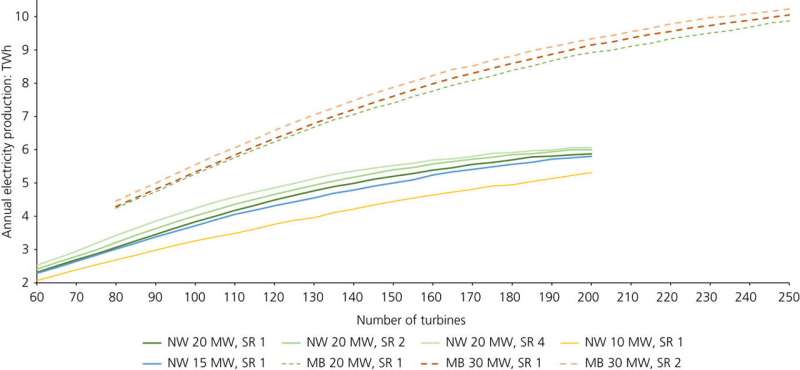This article has been reviewed according to Science X's editorial process and policies. Editors have highlighted the following attributes while ensuring the content's credibility:
fact-checked
trusted source
proofread
Exploring tidal range electricity generation for the UK

Tidal range schemes are financially viable and could lower energy bills, say researchers from Lancaster University's School of Engineering and the UK Center for Ecology and Hydrology. They combined a tidal range power generation model with its cost model to demonstrate the viability of tidal power.
Professor George Aggidis, Head of Energy Engineering at Lancaster University, said, "The obvious question for the U.K., with one of the best tidal resources globally, is why haven't we already got a tidal barrage scheme?"
The research published in Proceedings of the Institution of Civil Engineers—Energy demonstrates the benefits of tidal energy, which does not suffer from unpredictable intermittency as power is generated both day and night.
The creation of a tidal barrage could operate for 120 years or more to meet future demand and storage problems.
Professor Aggidis said, "There is an urgent need to kick-start the selection and development of schemes around Britain. Tidal range generation is predictable renewable energy driven by the gravitational pull of the moon and sun. The environmental and economic benefits are huge as barrages can protect coastal areas from flooding and sea level rise. With two-way generation and pumping, the full range of existing tides can be maintained within impoundments to protect and support low-lying intertidal areas such as saltmarshes and mudflats.
"Our studies show that with modern technology and operating procedures, estuarine barrages are the only practical way to protect these vital habitats. Coastal lagoons have also been proposed for several locations around Britain's coast. Schemes will provide jobs in construction and manufacturing for generations to come as well as opportunities for transport, communication, conservation, and recreation. In the long-term they will provide reliable power with reduced costs."
The U.K. has the second highest tidal range in the world and offers the U.K. a level of independence from global prices and in the long-term cheap clean power.
Currently the Tidal Range projects under commercial consideration offer an achievable 10 GW installed capacity, delivering over 20TWh/y, about 5% of U.K. energy use. Based on the U.K. relevant resource availability there is the potential to further increase this installed capacity over 4 to 5 times with other tidal range project sites around the U.K..
Such developments are essential to assist the U.K. to reduce its carbon emissions by replacing fossil fuel power stations. The current U.K. total generating capacity is around 42.8 GW that includes fossil fuels (19.2GW 44.9%), renewables (16.5GW, 38.5%), and low carbon (7.1GW—16.6%). The La Rance Tidal Range plant in France today generates the cheapest electricity in the EDF fleet—cheaper than nuclear.
More information: David Vandercruyssen et al, Tidal range generation: combining the Lancaster zero-dimension generation and cost models, Proceedings of the Institution of Civil Engineers—Energy (2023). DOI: 10.1680/jener.22.00077

















